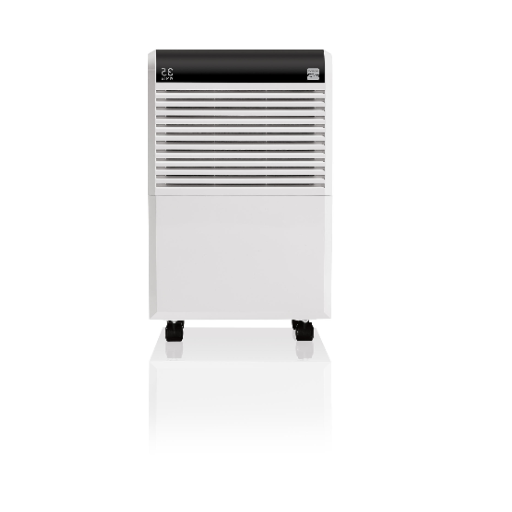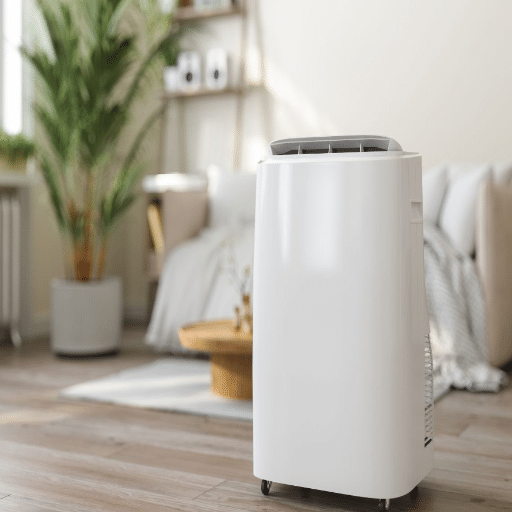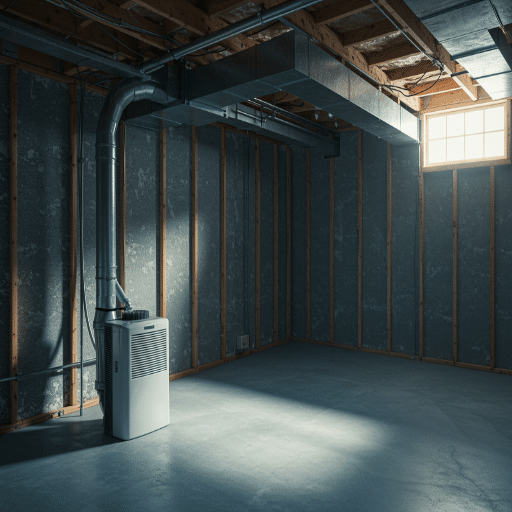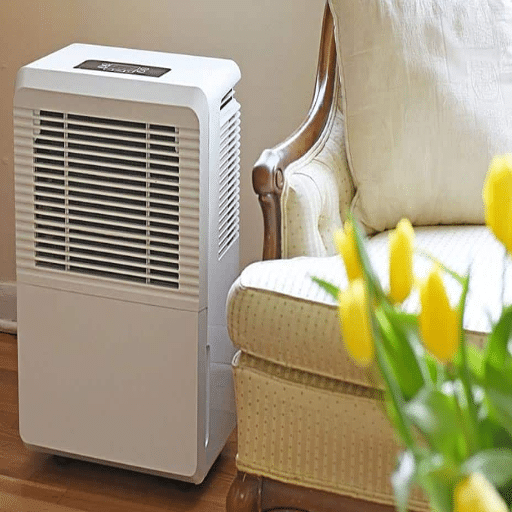When a dehumidifier freezes up, it can disrupt its efficiency and compromise its functionality, leaving you with excess moisture and potential damage to your indoor environment. This common issue often stems from factors like low temperatures, restricted airflow, or mechanical malfunctions affecting the unit’s coils. Understanding why your dehumidifier ices over and identifying the underlying causes is critical for maintaining optimal performance and prolonging its lifespan. In this article, we will explore the reasons behind frozen dehumidifiers, discuss how ice forms on the coils, and provide practical troubleshooting steps to help you restore your dehumidifier’s operation effectively. Whether you’re a homeowner or a facilities manager, this guide is designed to empower you with the knowledge to tackle this problem head-on.
Understanding Dehumidifier Freezing
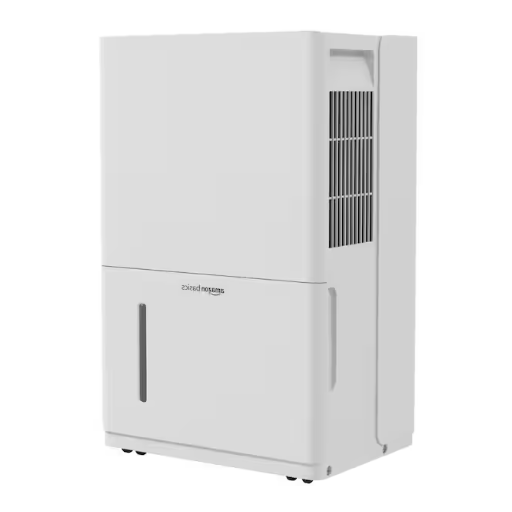
Common Causes of Dehumidifier Freezing
One of the main reasons a dehumidifier may freeze is due to an inadequate flow of air over the evaporator coils. If the flow of air is blocked due to dirty filters, blocked air intakes, or a malfunctioning fan, then the cold coils do not receive enough warmth to keep the moisture from freezing. Regularly changing or cleaning the filters and making sure the dehumidifier is not blocked can go a long way in preventing this problem.
Another common cause is to operate the dehumidifier in temperatures that are too low for the design of the unit. Most common types of dehumidifiers are designed to operate efficiently in an environment with a temperature range of above 65°F (18°C). When the surrounding air temperature falls below this, the unit’s cooling operation causes the coils to develop ice. One should, therefore, use dehumidifiers that are rated for low-temperature applications in such conditions.
Finally, refrigerant leakage or low refrigerant level disrupts the normal rhythm of the dehumidification cycle and so results in the freezing of coils. With inadequate refrigerant, the pressure within the coils drops which lowers the temperature excessively to the point where water vapor gets frozen. Regular checks, servicing, and maintenance can help counter and avoid refrigerant scenarios before freezing begins.
How Humidity Affects Dehumidifier Performance
Humidity is the divisor of efficiency and effectiveness for a dehumidifier. In madly humid conditions, the dehumidifier is forced to go through extra steps to remove moisture from the air; this may stress the system. With such a great workload, energy is consumed more, and without great maintenance, it can ruin the dehumidifier faster. If the humidity is sufficiently low, the naked dehumidifier then does not need too much energy to keep the indoor environment comfortable.
With excess moisture, the cooling coils of the dehumidifier might also be affected. The higher the moisture content in the air, the quicker condensation seems to occur on the coils. Poor control of water could endanger operation efficiency, including the possibility of dehumidifier coil freezing in certain cases if there is restoration of air circulation or refrigerant level issues. Keeping the coils clean and managing the air circulation route points out these occurrences.
Furthermore, the performance of a dehumidifier heavily depends upon the range of humidity it is designed to work under. Most dehumidifiers are prepared to function in a relative humidity range from about 30% to 60%, which corresponds to an agreed range of comforts and health standards for an indoor environment. Above or below this limit, such as extremely high moisture areas like basements or greenhouses, usually require either a higher capacity dehumidifier or one that comes with special features; otherwise, the better cannot give any real value. Optimal performance on variable humidity levels is ensured by choosing an apt unit and by regular maintenance.
Impact of Room Temperature on Dehumidifier Icing
There is a significant influence of room temperature on whether the dehumidifier is liable to icing. Generally, dehumidifiers work best when operating in temperatures above 65°F (18°C). When temperatures go low, say below 41°F (5°C), condensation on cooling coils starts freezing, causing the unit to cease working effectively and efficiently. The most common places affected by this include unheated basements or garages.
To keep icing problems at bay in lower temperatures, always opt for a dehumidifier with an auto-defrosting feature. The dehumidifier will switch off the compressor but keep the fan blowing to melt the ice off the coils. In addition, there are also low-temperature dehumidifiers that use a special kind of technology, which may include heating elements that enable them to work efficiently even in cold conditions.
The key to making the unit work with less chance of icing is placement and maintenance. The unit should be installed where air flows steadily, away from walls and obstacles, promoting even heat dissipation. Cleaning the filters and coils can also allow the dehumidifier to work smoothly. Should icing still occur and persist, elevating the ambient temperature or providing extra heating will form the next best iterations for usable conditions for operation.
Troubleshooting Frozen Dehumidifiers
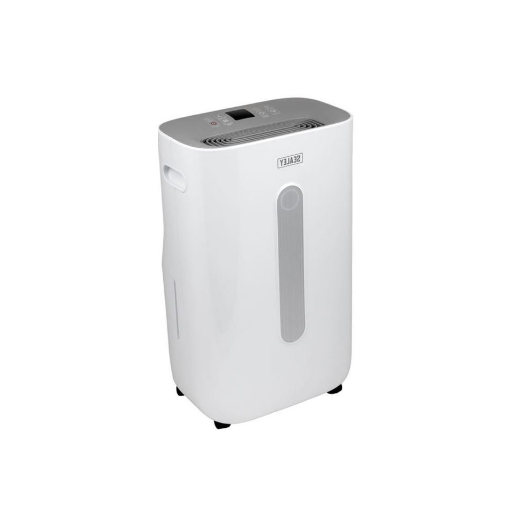
Step-by-Step Guide to Fix a Dehumidifier That Freezes
- Power Off: First, ensure safety during troubleshooting by turning off the dehumidifier and unplugging it. This is an important factor in avoiding electrical hazards during maintenance.
- Check for the Ambient Temperature: Check if it is too cold; that is, the room temperature in which the dehumidifier is placed. As a general recommendation, the temperature should be slightly above 65°F(18°C) for all dehumidifiers to work well. If it is too cold, shift the unit to a warmer location or use a space heater.
- Inspect Air Filters: Remove the air filters and inspect them for dust, dirt, or blockage that could restrict airflow. If these filters appear dirty, wash them thoroughly with warm soapy water; then, let them dry completely before putting them back in place.
- Check for Frost on Coils: With the unit open, check if the evaporator coils have frost or ice build-up. If icing is found, let it defrost naturally in a warm environment with power off for some hours.
- Check for Airflow and Placement: Ensure that the dehumidifier’s intake and exhaust vents are unrestricted and that the unit itself is placed at a distance of at least 6 to 12 inches away from walls or any furniture, allowing for sufficient airflow. This arrangement prevents overheating or inefficient operation, which generally causes freezing.
- Check the Calibration of the Humidistat: By checking the calibration of the humidistat, a test is performed on it to see if it is operating correctly. Confirming by a separate hygrometer that the unit has the same humidity levels is necessary. If the humidistat is faulty, it could force the dehumidifier to work too hard and, thus, cause freezing.
- Check the Defrost Cycle: For units equipped with an automatic defrost, check that the defrost cycle actually does start when the unit detects frost. Check the manufacturer’s guide for any indicators or mechanisms specifically related to this feature. Should it fail to start, the defrost control board or sensor may need repair or replacement.
- Clean and Maintain the Coils: Cleaning of the evaporator and condenser coils must be done regularly, as dust build-up on these surfaces has an insulating effect and hinders heat exchange. Remove any debris with a soft brush or non-corrosive coil cleaner.
- Check the Refrigerant Levels: When all other factors have been ruled out and freezing still occurs, low refrigerant levels may be the issue. Low refrigerant levels caused by leakage may reduce the efficiency of heat exchange, thus forming ice. Call a certified technician for inspection and refrigerant recharge, if necessary.
- Study the Outdoor Environment for a Longer Term: Areas with very high humidity, bad circulation, or uninsulated ones like basements may create much strain on the unit. Hence, improvements in insulation or ventilation could lead to a more stable environment where the dehumidifier can work optimally.
Going through these steps systematically, the majority of instances of freezing can be quickly resolved. Frequent maintenance together with adherence to operational guidelines given by the manufacturer will go a long way in extending the life of your dehumidifier and preventing the recurrence of this problem.
Identifying Blocked Airflow and Its Effects
Blocked airflow is one of the most common issues that can compromise the performance of a dehumidifier. When the intake or exhaust vents are obstructed, the dehumidifier’s ability to circulate air diminishes, leading to inefficiencies in moisture removal and a potential overheating of internal components. Some instances of the blockage of airflow include dust deposition on filters, debris in the intake areas, or an ill-advised place where units restrict the airflow.
The consequences of blocked airflow are immediate and long-term. In the short term, one may notice the dehumidifier losing the capacity to significantly lower the humidity level in a confined space. In the long run, a blocked airflow means an undue inordinate load on compressors and fans, thus dying early. Moreover, workarounds can arise after long hours of operation under blocked conditions, forcing an increased power consumption to hold the target humidity level, hence higher costs of operation.
It is necessary to inspect and clean the air filter regularly. Filters should be cleaned or replaced at intervals as specified in the manufacturer’s instructions to retain full airflow. Besides the regular filter checks, the filter grill at intake and exhaust should be checked and any deposit of dirt or debris removed. Care for blocking problems is crucial for the dehumidifier to function most effectively and sustain its performance throughout the years.
Checking and Cleaning Dehumidifier Coils
Proper care of dehumidifier coils is instrumental in guaranteeing efficiency and longevity. The evaporator and condenser coils carry out the heat exchange process through which the moisture is removed from the air. Dirt, dust, and other airborne debris may accumulate over time on the coils, inhibiting airflow and thus reducing the operation of the unit.
Make sure the unit is switched off and unplugged before beginning any cleaning operation, to avoid any safety hazard. Remove the outer casing of the dehumidifier in order to get access to the coils. Use a soft, non-abrasive brush or a vacuum cleaner with a soft attachment to brush off any loosely deposited dirt. For thorough cleaning, use a commercial coil cleaner spray suitable for home appliance coils while strictly observing the instructions on the label. Allow the cleaner to stand for the allotted time, then gently wipe the coils clean with a soft, dampened cloth. Do not use much force or scrape with a hard object since there is a possibility of damaging the delicate coil fins.
Also, check for any signs of ice build-up on the coils or corrosion. Ice build-up is a clue that the unit is not working right at the temperature level it should, whereas visible corrosion could require professional servicing or even part replacement. Always keep to a care schedule specified in the manual in order to meet manufacturer recommendations. Following a well-arranged maintenance schedule for the coils will keep the dehumidifier free from all such inefficiencies and will make your investment last longer.
Preventing Dehumidifier Freezing
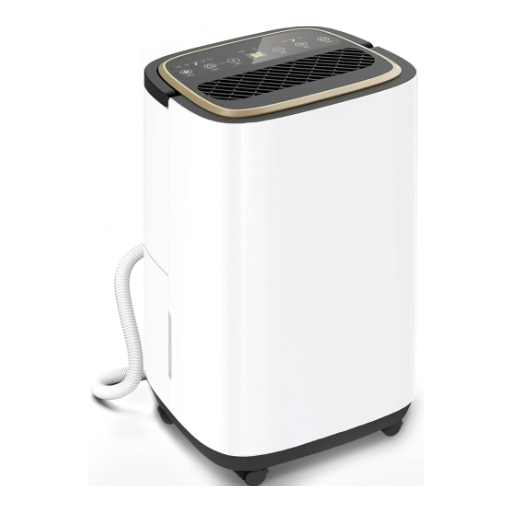
Best Practices to Keep Dehumidifier from Freezing
Dehumidifier freezing needs constant consideration of working conditions and the best treatment applicable to the particular type of unit. The low-temperature ambient is one of the most common factors in freezing. Most home dehumidifiers are designed to perform well between 41°F to 95°F. To keep a household unit from freezing in a cold environment, all other conditions being equal, one should consider dehumidifiers equipped with either an automatic defrost system that shuts down the compressor after frost buildup is sensed to allow the coils to thaw before continuing operation.
Another factor is to maintain good airflow through the unit. A blocked air filter or vent will upset the heat-exchange process, causing the coils to become so cold that the water vapor in the air will condense and freeze on the cold surface. So keep the air filter clean or replace it as prescribed in the user manual, and make sure nothing is blocking the intake and exhaust.
Humidity is another important factor. Running the dehumidifier in very low humidity conditions will put stress on the components and they end up being prone to frost formation. Plan to operate the dehumidifier in areas where ambient humidity is above 30%, if needed, use a hygrometer to measure the humidity accurately for precise adjustment accordingly.
Another thing to check would be the condensate drainage system to ensure the water is properly expelled. A blocked drain hose or reservoir may potentially alter internal pressures unintentionally, resulting in erratic performances and freezing. Good maintenance combined with needed environmental adjustments should help keep the freezing phenomenon at bay, guaranteed on which the efficient running of any dehumidifier depends.
Proper Placement for Optimal Performance
To usher in the best working environment for a dehumidifier, the placement is crucial and depends on several technicalities. The equipment should ideally be located in the center of the room to allow even conditioning of air, thus preventing areas of higher humidity and enabling maximum efficiency of the unit. To allow free movement of air to the intake and exhaust vents of the device, a minimum clearance of 12 to 18 inches should be left around it. Obstructions can hamper its performance and will increase energy consumption.
Similarly, ensure that the unit is placed on a flat and stable surface to avoid any vibrations during operation that might lead to inaccurate sensor readings. Avoid environments that are grossly dusty or where dirt could settle, as these clog filters and reduce operational life. For basements or spaces where elevated moisture levels persist, try placing the dehumidifier close to the moisture source, such as sump pumps and exterior walls, to allow it to extract moisture more quickly.
It is revealed by the research that dehumidifiers are most useful if the ambient temperature is maintained within the prescribed working range, which generally lies between 65 and 85 degrees F, depending on each model. Poor placement in cold or unheated surroundings, such as garages, would defeat its purpose as the refrigerant in compressor-based units is inefficient in cold temperatures.
Maintaining Ideal Operating Temperature Ranges
In order to attain optimal efficiency, the operating temperatures of dehumidifiers are to be within the specified ranges. Modern dehumidifiers are mainly built to operate in ambient conditions where the temperature is always above 65°F. A compressor-type dehumidifier working below this temperature in unheated basements, garages, or outdoors, will lose efficiency as the refrigerant coils cannot condense moisture from the cooler air, which materials then crystallize into frost on the coils, preventing further condensate buildup.
In cooler environments, desiccant-type dehumidifiers will probably work better because they do not rely on refrigeration technology but absorb moisture by drying agents instead, which are not adversely affected by lower temperatures. These units can usually operate comfortably down to 33°F and are thus appropriate for cold environments.
Data collected in recent field studies highlight how important it is to focus on temperature monitoring to extend the operational lifespan of a dehumidifier. Installing thermal sensors, or placing the device where the temperature is controlled, will maximize the efficiency of the dehumidifier while minimizing unnecessary energy consumption during periods when full capacity is not required. For prospective long-term use under such variable conditions, checking the manufacturer’s recommendations and choosing units that allow for auto-defrosting in some manner may alleviate operational issues with temperature reductions.
Maintaining Dehumidifier Performance
When to Clean or Replace Air Filters
Dirt accumulation on an air filter must be prevented if the dehumidifier working capacity is to be kept above optimal. For energy conservation and longer functioning life, the air filters should be evaluated and cleaned preferably once a fortnight, depending upon usage and environment. With high humidity in the area or systems exposed to dust or debris, maintenance cycles might have to be shortened.
Filter changes vary, with more manufacturers now recommending a change every 3 to 6 months in an average operational environment. On the contrary, offering the great advantage of intermittent replacement cycles, some of the advanced machines come with filter systems that are reusable or even washable. Check your unit’s user manual or manufacturer’s specifications for these details, especially since some filters are engineered for heavy-duty use and may have their unique maintenance periods.
If filters are not cleaned or replaced in time, their performance will be decreased, airflow will be restricted, dehumidifier effectiveness will lessen, and energy costs will increase. Filtering maintenance or replacement becomes necessary when dirty accumulation or debris becomes visible, when the air outlet seems to lessen, or when unusual noises emanate from the operation of the machine. It might also come from where machines have been fitted with filter alert indicators and these indicators must be relied upon as an exact maintenance cue. Regular filter maintenance ensures that your dehumidifier will be working efficiently and produce consistent results throughout its lifespan.
Frequency of Emptying the Water Tank
Depending largely on several key factors, such as external humidity, the capacity of the water tank, and the constant operation of the dehumidifier, the frequency of emptying the water tank of any particular dehumidifier varies largely from one situation to the other. In moderately humid environments, an average dehumidifier would require emptying every 8 to 12 hours. However, in higher humid areas, that collection phase may greatly shorten to as few as 4 to 6 hours, especially when the unit operates continually. Dehumidifiers with larger water tanks, generally having capacities between 12 and 20 liters, tend to support longer intervals of time before manual emptying becomes necessary.
Modern advances in dehumidifier technology include features such as an automatic shutoff, which prevents overflow should the water tank fill up to capacity. Another related innovation is the direct-drain hose attachment, which drains water nonstop without the need for human intervention and is a desirable feature in locations where high humidity persists for long stretches of time, such as basements or sea-coast areas. For those that offer only manual tank removal, however, it is sure to be paramount to pay attention to the tank fill level from time to time, especially during high-humidity seasons such as summer months; neglecting to empty promptly could lead to not just water overflow but diminished operational efficiency as well.
Based on industry statistics, to maintain optimal humidity levels term is about 30%-50% relative humidity, depending upon the time of year and the room. A dehumidifier must collect 20-30 pints of water a day in a home located in a high-humidity zone. This tank monitoring helps maintain consistent operations of the dehumidifier and extends its working life by preventing water-related damages. For excessively moist areas, knowing the specific requirements of the space and maintaining a clear schedule for water disposal is necessary to bring out the full efficiency of the device.
Winter Usage Tips for Dehumidifiers
During the winters, it is imperative to keep indoor humidity levels under control so as to get rid of problems of condensation, mold proliferation, and structural degradation due to high levels of moisture. Dehumidifiers thus become great tools for controlling these issues, although consideration must be given to their use in cold weather. To begin, check if the dehumidifier can be used in a low-temperature setting. Best are those units with an auto-defrost function as this alleviates the build-up of frost on the coils within, thereby diminishing performance.
Now comes the need for a placement dehumidifier should be put in areas where humidity tends to accumulate, such as basements or beside big windows, but it should never be placed near any heat source, or else uneven moisture will be created. During wintertime, aim for a relative humidity of 30-40 percent to create a comfortable environment without excessive drying that may pose respiratory issues or damage hardwood furnishings.
Maintenance is, of course, one more step to ensure efficiency. Clean the air filter, check for ice formation, and do other regular maintenance checks. If faced with extremely cold weather, consider desiccant dehumidifiers because they function fine at really low temperatures without freezing any of their components. Making these adjustments will go a long way to keeping your dehumidifier working well throughout winter.
Repairing Frozen Dehumidifiers
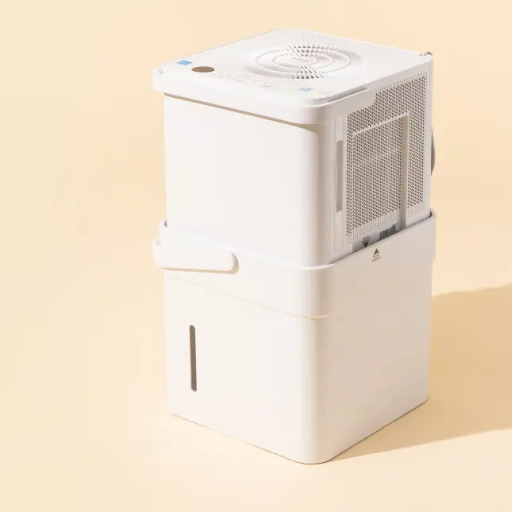
When to Seek Professional Help
In a whole host of emergencies, one should simply resort to professional help for a dehumidifier. If your dehumidifier keeps freezing despite your maintenance routine, this might imply the presence of some bigger issue, such as a defective humidistat or a refrigerant leak, which, for the most part, requires the necessary diagnostic tools and expertise to adequately repair. On the other hand, if the unit becomes very noisy, emits strange odors, or does not collect water even under the best operating conditions, better for a technician to solve the issue rather than have you murmur about.
Looking at electrical issues is another very important factor. In case your dehumidifier is not powering on or you are noticing frequent circuit trips, this could be indicative of wiring issues or electrical faults that pose safety issues. Such hazards can be safely troubleshot and repaired by a trained professional technician. Employing an experienced service provider guarantees compliance with safety measures, and ensures proper working and long life for the device.
Finally, professional servicing at regular intervals for high-capacity or complex industrial dehumidifiers ensures the highest-level performance and helps to detect any problems before they become too severe. It would be best to choose a technician with special skills in your particular dehumidifier for the best-guaranteed results.
Understanding Potential Repair Costs
Several variables affect the overall final cost of dehumidifier repair services, which can range from the kind of device to even the level of damage incurred. High-capacity or industrial-grade dehumidifiers always require special parts and skilled labor; hence, there are a lot of costs involved in their repairs. Common difficulties with a compressor, coils, or sensors will vary in repair difficulty and hence be charged differently.
It usually costs between $150 and $400 to replace major components, such as compressors, depending on the unit’s size and model, while cleaning the filters or replacing circuit boards may cost something like $50 to $200. Labor is calculated hourly and depends on several factors, including location and type of repair; usually, labor stands between $50-$100 per hour. There are turnaround times one should consider, as well, particularly if the repair has to be expedited.
The invention of advanced diagnostic tools today has also helped in transparent and efficient dealings by helping establish an accurate root cause analysis and identifying precise repair solutions. Knowledge of these cost factors can assist users with more planned maintenance so as to keep performance minimal in downtime and maximum in longevity.
References
-
Coupling Active Heat Exchange and Vacuum Membrane-Based Air Dehumidification for High-Efficiency Air Conditioning: This research explores innovative methods to improve dehumidification performance through advanced membrane technologies.
-
Icing Mitigation via High-pressure Membrane Dehumidification in an Aircraft Thermal Management System: This paper discusses the challenges of icing in dehumidification systems and proposes solutions for thermal management in aircraft.
-
Zeolite Membrane Water Vapor Separation for Building Air-Conditioning and Ventilation Systems: This study examines the application of zeolite membranes in dehumidification processes under various environmental conditions.
Frequently Asked Questions (FAQ)
Q: Why does my dehumidifier freeze up?
A: A dehumidifier can freeze up due to several reasons, including poor airflow, low room temperature, or ice buildup on the coils. When the ambient temperature is below 65 degrees Fahrenheit, the dehumidifier struggles to operate efficiently, causing the coils to freeze.
Q: What are the common causes of a dehumidifier freezing?
A: Common reasons why your dehumidifier might freeze include low humidity levels, clogged air filters, dirty coils, or a malfunctioning fan motor. These issues can prevent proper airflow, leading to condensation and ice accumulation on the evaporator coil.
Q: How can I prevent my dehumidifier from freezing?
A: To prevent freezing, ensure that the dehumidifier is placed in a warmer room where the temperature is above 65 degrees Fahrenheit. Additionally, clean the coils and air filter regularly to maintain proper airflow and efficiency.
Q: What should I do if my dehumidifier freezes?
A: If your dehumidifier freezes, first unplug the unit and allow it to thaw completely. Once thawed, check the air filter and coils for cleanliness, and ensure that the appliance is in a suitable location with adequate room temperature and airflow.
Q: Can low humidity cause my dehumidifier to freeze?
A: Yes, low humidity levels can lead to a dehumidifier freezing up. When the humidity is too low, the unit may not draw enough moisture from the air, causing the evaporator coil to become too cold and ice to form.
Q: How do I troubleshoot a freezing dehumidifier?
A: To troubleshoot, check if the filter is clean and the coils are free of dust and debris. Ensure that there is sufficient airflow around the dehumidifier and confirm that the room temperature is appropriate for operation.
Q: Is ice buildup on the coils a serious issue?
A: Ice buildup on the coils is a common issue and can affect the unit’s performance. If not addressed, it can lead to more severe problems, including compressor damage. Regular maintenance can help prevent this issue.
Q: Can I use my dehumidifier in lower temperatures?
A: While some dehumidifier models are designed to operate in lower temperatures, many standard units may freeze up if the room temperature is too low. It’s best to check the manufacturer’s guidelines to determine the suitable operating conditions.
Q: What do I need to check if my dehumidifier keeps freezing?
A: If your dehumidifier keeps freezing, check the airflow, ensure the filter is clean, inspect the coils for ice buildup, and verify that the room temperature is within the recommended range. You may also want to consider moving the dehumidifier to a warmer location.
Q: How can I fix a dehumidifier that freezes up?
A: To fix a dehumidifier that freezes up, start by unplugging the unit to allow it to thaw. Clean or replace the air filter and coils, ensure proper airflow, and consider placing the unit in a warmer room to prevent future freezing issues. If problems persist, consult a professional for further assistance.

